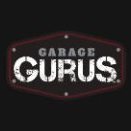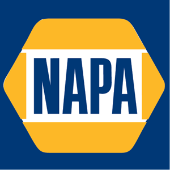-
Welcome to Auto Parts Forum
Whether you are a veteran automotive parts guru or just someone looking for some quick auto parts advice, register today and start a new topic in our forum. Registration is free and you can even sign up with social network platforms such as Facebook, X, and LinkedIn.
Installing Castle Nuts on Ball Joints and Tie Rods
-
Similar Topics
-
By NAPA
It’s no surprise that electrification has spread into every corner of the automotive world. From humble local delivery vans to high-voltage track monsters, the gamut of EVs on the road is impressive. So, it is no shock that manufacturers recognized the inherent benefit electric motors have in delivering a ton of torque at initial startup. That gives an EV tremendous power for launching off the line, something enthusiast drivers appreciate. Here’s the top hot rod electric cars that are guaranteed to get your blood pumping in 2024.
Porsche Taycan – 750 Horsepower
Porsche launched the
link hidden, please login to viewin 2019 as its first dedicated electric car. Keeping with Porsche naming conventions, the highest output version, Taycan Turbo S, is the top-of-the-line in terms of performance. No, there is not a “turbo” in the traditional sense, but the Turbo and Turbo S models do get a nice first bump of recognition with the powerful name. Driver’s get a 2.6 second 0–60 mph launch and a 161 mph top speed for track days. Mercedes-AMG EQS – 751 Horsepower
It should come as no surprise that the in-house hot rod division of Mercedes-Benz would get its insulated-gloved hands into the EV market. While the
link hidden, please login to view is not the first electric AMG vehicle (the 2013 Mercedes-Benz SLS AMG Electric Drive gets that nod), it is the first on a dedicated electric vehicle chassis. Mercedes claims a 3.4 second 0–60 mph time, which is .1 second faster than the combustion-engine Camaro ZL1 Coupe from the same year. Rivian R1T – 835 Horsepower
link hidden, please login to view may only sell one vehicle (the SUV is pretty much identical to the truck), but sales show the payoff of extreme product focus. link hidden, please login to view buyers can select the quad motor version for combined 835 horsepower and a 3.0 second 0–60 mph time. That’s faster than a Dodge Challenger Hellcat Redeye, plus it has enough room to pick up a load of mulch from the local garden center. GMC Hummer EV – 1,000 Horsepower
It feels kind of silly labeling the hulking
link hidden, please login to view as an EV hot rod, but stay with us. When the spec sheet shows three motors with a total of up to 1,000 horsepower and a 0–60 mph time of 3.0 seconds flat, that’s hustling. And when that hustle is brought by something the size of a tiny house, it is even more impressive. Sure “Watts to Freedom” mode sounds silly, but it is akin to a tank getting shot out of a cannon, so it matches. Tesla Model S Plaid – 1,020 Horsepower
When it comes to drag racing electric cars,
link hidden, please login to view was likely the first manufacturer to grab driver’s attention. Fans of the 1987 movie “Spaceballs” should get Tesla’s name reference — setting light speed to Plaid. Three motors with a combined 1,020 peak horsepower rocket this sedan to 60 mph in just 1.99 seconds. That’s a full second faster than a new Corvette. It also rips the quarter mile in 9.23 seconds at 155 mph. Just how quick is that? If you want to race your Tesla link hidden, please login to view Plaid at a sanctioned NHRA drag race, it will need a roll cage and a parachute! Tesla Model X Plaid – 1,020 Horsepower
Tesla took the same drivetrain as the already insane Model S Plaid and put it in an SUV, thus creating the
link hidden, please login to view Plaid. The added size and weight took a toll as 0–60 mph now takes 2.5 seconds, but the quarter mile time is just a touch slower at 9.9 seconds. That’s two seconds faster than a Dodge Durango SRT Hellcat. Plus, it has cool gullwing doors and can tow 5,000 pounds. Lucid Air – 1,234 Horsepower
Now we’re getting into ridiculous territory. Dropping $250k on a
link hidden, please login to view Sapphire gets you 1,234 horsepower and a top speed of 205 mph. That money also gets you to 60 mph in 1.89 seconds and an 8.95 second quarter mile time. All this in a four-door sedan that can go more than 400 miles on a single charge. Sure, a Bugatti Veyron will outrun it on the top end, but the Lucid Air Sapphire will make it claw for every inch on the way to 200 mph. Rimac Nevera – 1,914 Horsepower
For our pick of the baddest electric hot rod, we have the Rimac Nevara. This is beyond simply an electric sports car and ventures into pure hypercar territory with a sleek body to match. Its 1.74 second 0–60 mph time set a
link hidden, please login to view in May of 2023 along with a slew of other acceleration world records. It can hit 249 mph in just 21 seconds. It can also go from a dead stop to 249 mph and back to a dead stop in just less than 30 seconds. And, just for silliness, Rimac set a world record for the fastest driving…in reverse (171 mph). Now, for the big downside, that mind bending speed will set you back $2.2 million dollars. NAPA Is Your One-Stop EV Shop link hidden, please login to view
So, there you have it. Electric hot rod options from tame to insane. Rumors still surround a possible electric muscle car from Dodge in the form of the Charger Daytona SRT Banshee, but no official production date is set. Looking to build your own EV muscle car?
link hidden, please login to view is an electric motor swap kit that you should find available to the public soon. Thinking of upgrading to the electric vehicle lifestyle, but you need a complete at-home charging station setup? NAPA has you covered thanks to a partnership with
link hidden, please login to view, which can assist you in purchasing the link hidden, please login to view for your needs, and correctly link hidden, please login to view in your garage. And remember, NAPA Auto Parts has a long history of supplying quality parts for at-home mechanics restoring muscle cars. Tackle your
link hidden, please login to view with the best cooling fans, cold air intakes, control modules and more. Simply shop link hidden, please login to view or head over to your local link hidden, please login to view store. Sign up for link hidden, please login to view now to start earning Points—earn 100 Points, and you get $5 off your next purchase automatically! Photo courtesy of
link hidden, please login to view. The post
link hidden, please login to view appeared first on link hidden, please login to view.
link hidden, please login to view




Recommended Posts
Join the conversation
You can post now and register later. If you have an account, sign in now to post with your account.
Note: Your post will require moderator approval before it will be visible.